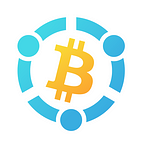ViaBTC|The Continued Boom of Blockchain Domain Systems: What Is So Special About the All-inclusive FIO?
The blockchain space has witnessed the emergence of many decentralized domain systems, including mainstream blockchain domain systems like ENS (Ethereum Name System), DAS (Decentralized Account System), and FIO, a decentralized domain protocol. As one of the most essential infrastructures in the blockchain world, domain systems provide more convenience for crypto users and lower the threshold of using cryptos.
Among these domain names, FIO is not used as extensively as ENS and is less interoperable than DAS. However, as a rising star in the field of blockchain domain systems, FIO offers more diverse functionalities. Launched as early as April 2020, FIO’s mainnet is a blockchain network that uses the Delegated Proof of Stake (DPoS). The FIO ecosystem is composed of wallets, exchanges, applications, crypto payment processors, and protocol support, powering FIO’s rich functions, a feature that is not available on ENS or DAS.
FIO stands for Foundation for Interwallet Operability. More specifically, Interwallet Operability is a non-profit consortium of leading-edge wallets, exchanges, and crypto payment processors as well as entities and community members dedicated to advancing blockchain usability and interoperability via the FIO Protocol. It aims to lower the threshold of using crypto by simplifying the abstract private key and public address. FIO is a bridge that connects wallets, exchanges, and applications.
Similar to an email address, FIO addresses eliminate the need to see, or even know about, the receiving addresses when users transfer cryptos because the protocol automatically maps the public address of all the tokens it supports. With an FIO address, we no longer have to worry about sending tokens to the wrong address or the loss of tokens due to typing mistakes.
Moreover, it is quite simple to create an FIO address, and all you need to do is to go through the registration process in a wallet or exchange that FIO supports. For example, in Infinito Wallet, you’ll need to click “FIO Service” on the homepage to get the registration page. Next, you should pick a preferred username that no one has registered before.
Once FIO approves your address, you could enter the FIO address of someone else as the send-to address, and the FIO protocol will automatically map the public address according to the domain (FIO address) you entered, which removes the hassle of copying and verifying the public address. Furthermore, FIO allows you to link all the token addresses it supports to one domain. In other words, you’ll only need one FIO address for the transfer of BTC, ETH, or ATOM.
Offering a duration of 85 years, the registration of FIO addresses is completely free. As you can see from the pictures below, the FIO we just registered will not expire until 2106. Of course, you could always add more personalized elements to your username for 40 USDC.
In terms of security, FIO is fully decentralized, autonomous, and private. All transactions on the FIO protocol require the FIO private key, which is stored in the user’s wallet. Additionally, sensitive transaction information, including public addresses and metadata, can also be encrypted on the blockchain for enhanced security.
The segment of blockchain domain systems has more established, and the number of crypto applications like wallets supported by decentralized domain systems is also on the rise. In this regard, ENS is the biggest domain system, with support for over 50 applications in terms of wallet alone. DAS, the close second, supports most of the mainstream wallets, such as imToken, ViaWallet, and ONTO Wallet. FIO is also reaching out to all kinds of crypto applications. Apart from Infinito Wallet, the FIO protocol also supports Math Wallet, Token Pocket, Trust Wallet, etc.
Apart from its massive ecosystem, FIO has continued to roll out new functions. For instance, functions advertised by FIO, such as secure routing of multi-signature requests, recurring payments, and fee splitting, are all on its agenda. In the future, blockchain domain systems would not only feature functions of traditional domain systems, such as domain name resolution. They ought to seek improvements in other aspects to link more segments and players and create a fully connected blockchain world.
